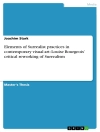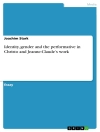In ‘A History of Caricature and Grotesque in Literature and Art, ‘ Thomas Wright embarks on an extensive exploration of the evolution of caricature and the grotesque across various forms of artistic expression. The book meticulously dissects the interplay between humor and social critique, presenting a scholarly examination of how caricature has shaped societal perceptions and artistic movements throughout history. Wright’s literary style is characterized by its rigorous analysis and rich historical context, drawing upon a wide array of examples from antiquity to the modern era, thereby revealing the profound ways in which satire and exaggeration have functioned in literature and the visual arts. Thomas Wright, an esteemed scholar with a particular affinity for the interplay between art and literature, was inspired by the Victorian era’s vibrant cultural landscape, which witnessed an explosion of print media and satirical art. His academic background in both literature and art history, combined with a passion for understanding social dynamics, makes him uniquely equipped to articulate the significance of caricature as a form of both entertainment and political discourse. This book is highly recommended for anyone interested in the intersections of art, literature, and social commentary. Wright’s comprehensive approach not only enlightens but also invites readers to appreciate the enduring legacy of caricature and the grotesque in shaping cultural narratives.
Over de auteur
Thomas Wright was an eminent English antiquarian and writer, renowned for his significant contributions to the fields of literature, history, and art. Born in 1810, Wright was a polymath who held deep interests in various disciplines, a trait reflected in his extensive written works. Notably, his scholarship in the area of medieval studies and English philology marked him as a notable figure of the 19th century. Wright’s profound impact on the study of historical art and literature is particularly exemplified by his book ‘A History of Caricature and Grotesque in Literature and Art’, which remains a seminal work for researchers and enthusiasts of cultural history. In this comprehensive exploration, he delves into the origins and evolution of caricature and the grotesque, tracing their influences from ancient practices to the satirical artworks of his own time. Wright’s literary style is distinguished by meticulous research and a narrative that is both engaging and educational, reflecting his academic rigour and his quest to make history accessible to a broader audience. His ability to weave historical facts with insightful analysis has granted him a revered place among scholars, and his works continue to be referenced for their historical relevance and scholarly merit.












